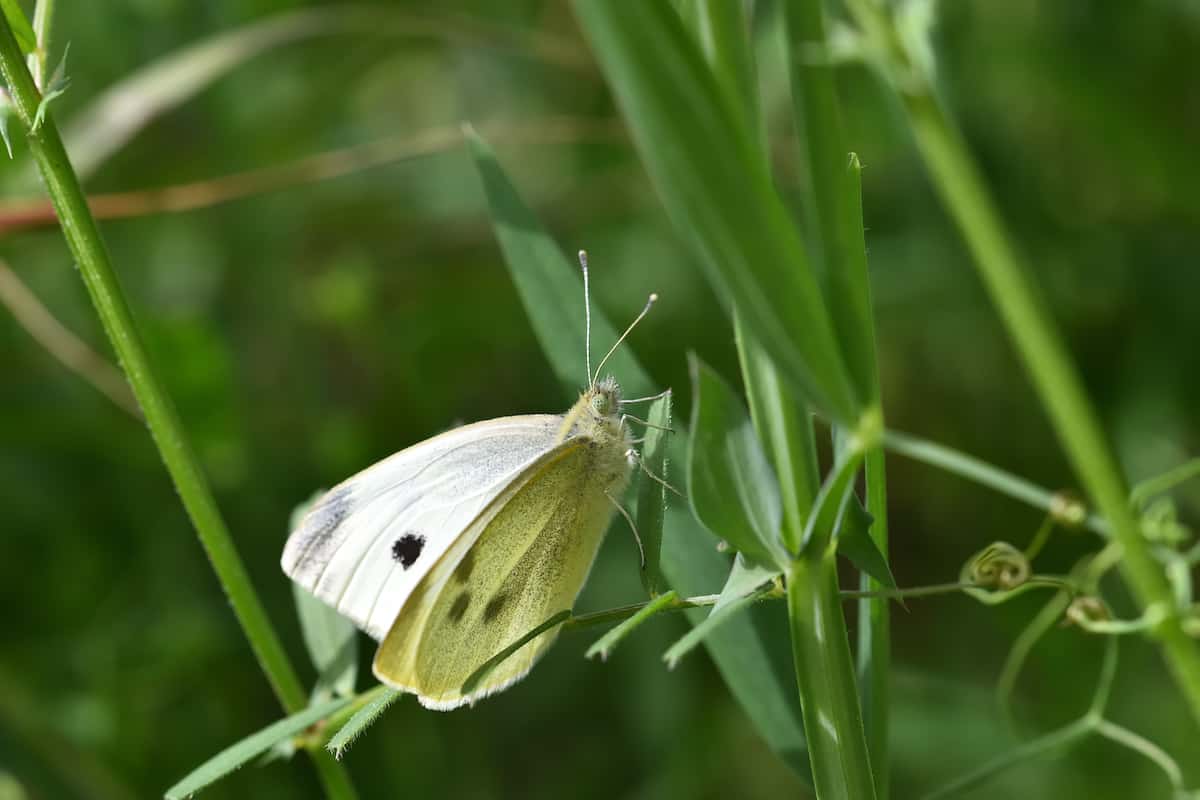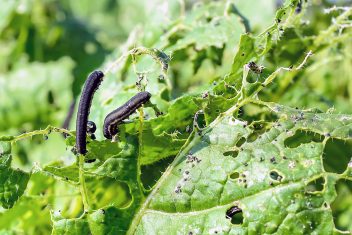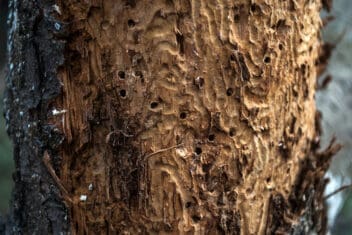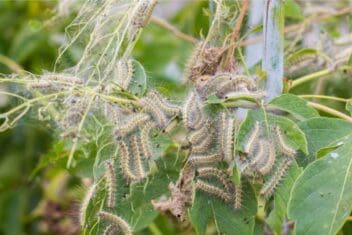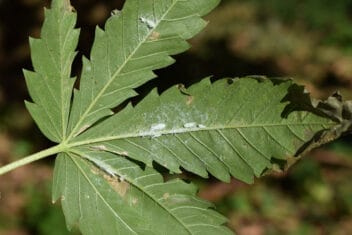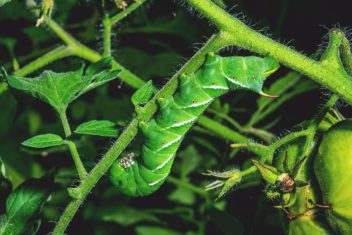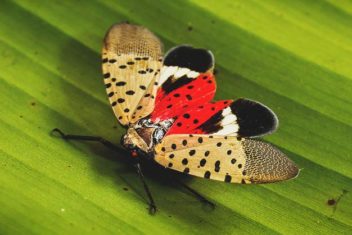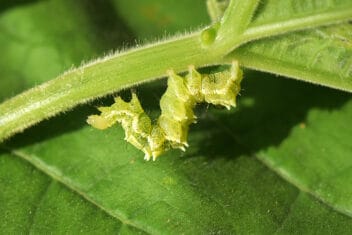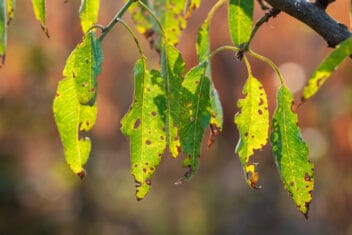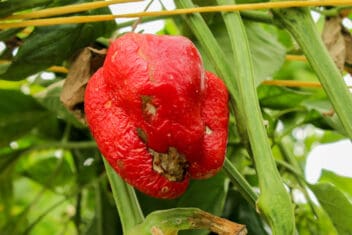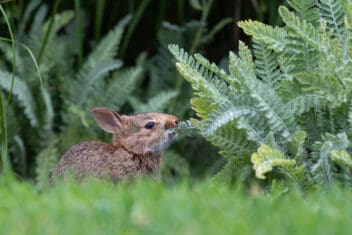Plants in the cabbage/brassica family are spectacularly tasty. The problem is that cabbage white butterflies find them delicious too, and they can obliterate an entire crop if you don’t take action.
Broccoli, rapini, cauliflower, arugula, cabbage, and kale are as versatile as they are scrumptious, so it’s no wonder gardeners love them.
But if you’re dealing with cabbage whites, you may be reconsidering your decision to grow them.
Fortunately, there are several ways to fend off complete destruction. Ready to learn how?
About Cabbage White Butterflies
If you’ve ever tried to grow members of the cabbage family (Brassicaceae or Cruciferae), you’ve undoubtedly come across these little jerks before.
Cabbage white butterflies (Pieris rapae) are easily identifiable, as they’re a creamy white color with a few dark dots towards their wings’ outer edges.
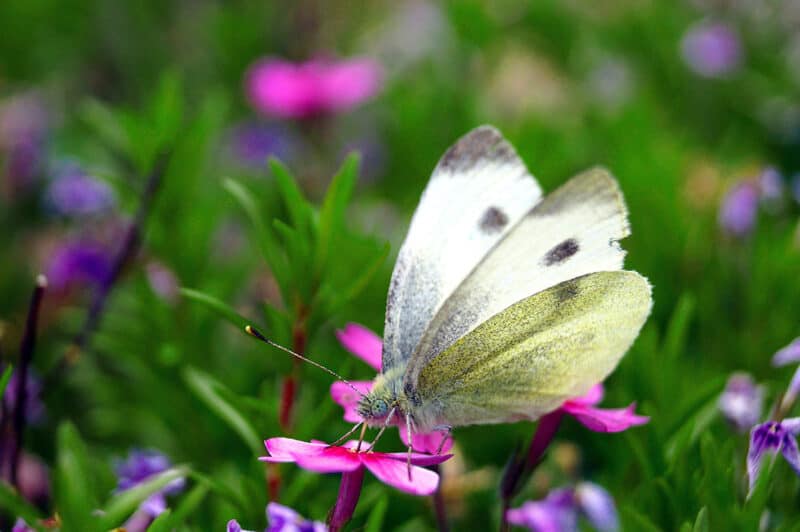
If you’re in North America, northern Europe, Australia, or New Zealand, and you find these lovely white pests eating your bok choy, you’re likely dealing with Pieris rapae.
They have slightly larger cousins that live in southern Europe, Asia, and North Africa, known as large white cabbage butterflies (Pieris brassicae). The methods for fending them off are identical, so you can use the same techniques whether you’re in Texas or Turkey.
They’re quite small, and since they’re not as showy as most other butterflies, they’re often mistaken for moths. Females gravitate towards plants that are blue-green in hue to lay their eggs, and which plants tend to have those colors in spades?
That’s right: cabbages, kale, etc.
How to Identify Cabbage White Butterfly Infestation
Well, this one is fairly self-explanatory: if you see these insects flitting around your plants, they’re undoubtedly laying eggs on them. And if you suddenly see a bunch of gaping holes all over the plants’ leaves, they’ve not only already laid eggs—they’ve hatched.
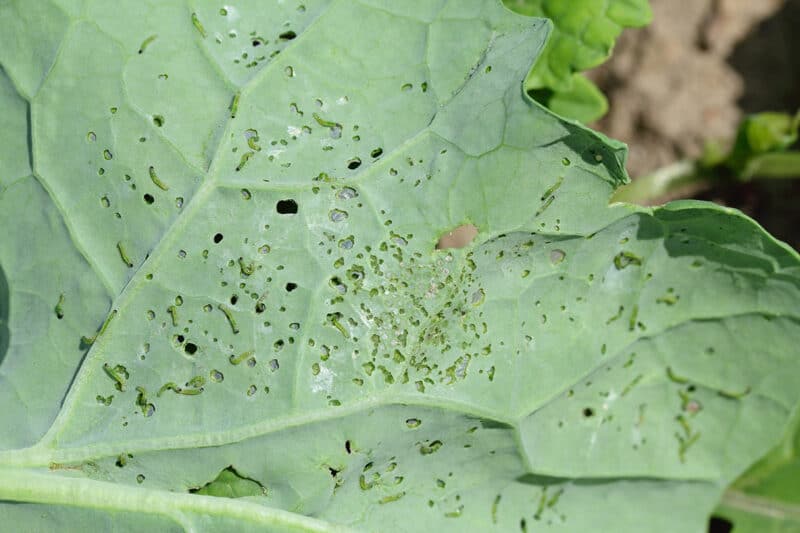
These larvae don’t just munch on your plants’ leaves. They like to burrow down into cabbage hearts and broccoli heads, rendering them discolored, sludgy, and unusable.
If you don’t catch the eggs and larvae early, you’re likely to lose a ton of your own food to them, so be sure to act quickly.
The reason why the larvae can do so much damage to your crops so quickly is because of egg dispersal.
Cabbage butterflies figured out that laying just a couple of eggs per leaf rather than all on one leaf meant that their caterpillars had a greater chance of survival. This is because they aren’t competing for food, and less chance of all being taken out by a single predator.
Speaking of predators, you can’t depend on birds to help get rid of these caterpillars for you, either. Your chickens might be of huge help in keeping slugs and snails away, but not these.
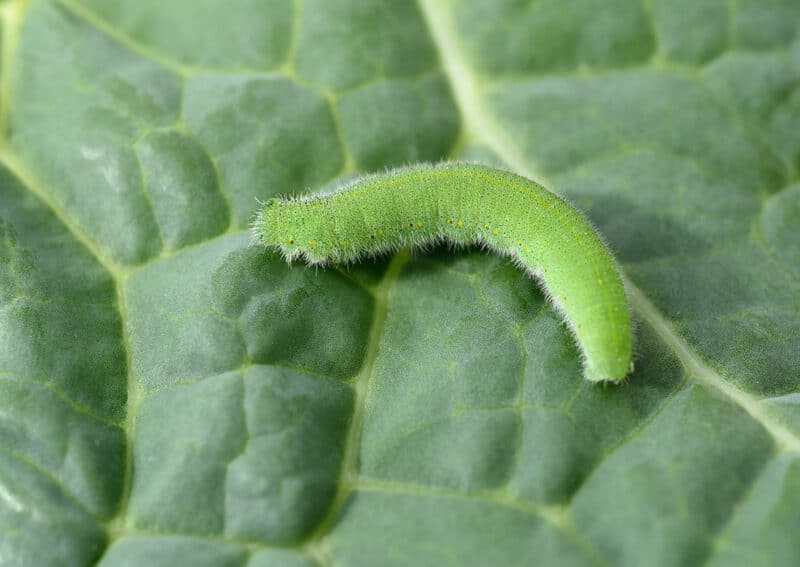
Brassicas all have sharp-tasting mustard oil in their stems and leaves. This basically “flavors” the larvae that feed on them, which makes them quite unappealing to predators.
The one exception to this is guinea fowl. For some reason, those quirky little birds seem to love those zesty caterpillars. Some people claim that house sparrows will eat them too, but that can be hit or miss.
For greatest effect, your best bet is a threefold attack method: row covers, trap crops, and sprays.
Row Covers
I didn’t start using row covers until this year, and so help me, I wish I had started years ago. I’ve lost countless plants to cabbage white butterflies, and all that loss could have been avoided.
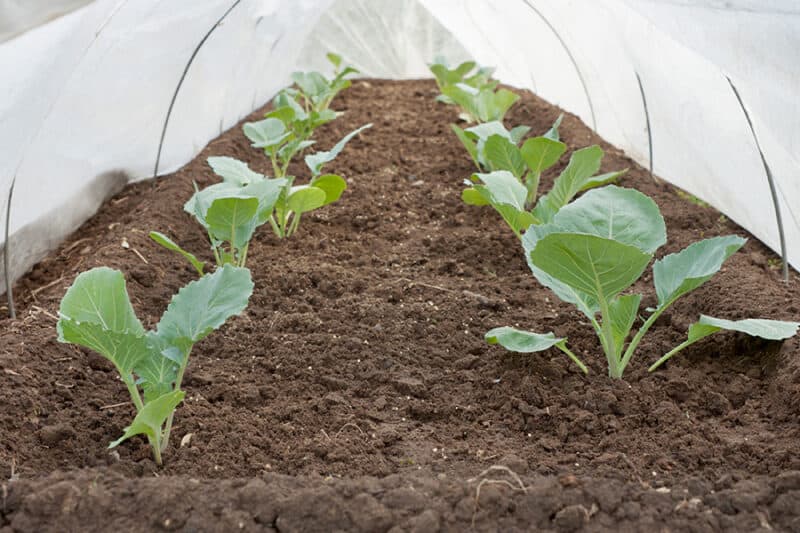
Yes, setting up row covers is a bit of a pain to begin with. Just trust me when I say that the results are well worth the sweat and back strain.
For fending off cabbage white butterflies, you can either use butterfly netting or a fine mesh. The netting is usually black and creates a tight grid that they can’t pass through because of wing size. This prevents the butterflies from laying eggs on the undersides of your plants’ leaves.
The downside to this netting is that it doesn’t offer much protection if your plants get really big.
Unless you create row cover supports that are raised quite high off the ground, you run the risk of taller brassicas like kale, collards, and rapini pushing up against the net. If that happens, the butterflies can still get to the leaves.
I use very fine mesh covers instead, and they work wonders. Truth be told, some of my covers are actually repurposed mosquito netting! The net I had around my bed got some tears in it during storage, so I just split the net in two, sewed the holes closed, and covered my kale and arugula.
Worked like a charm.
Trap Crops
Have you ever managed to get a toy away from a toddler by the old bait-and-switch method? Think of a trap crop the same way. They keep cabbage white butterflies occupied and away from your prized vegetables.
Plant brassicas that you don’t find particularly tasty around the perimeter of your covered vegetables. The best location is approximately a foot away from the bed. I used leaf mustard (Brassica juncea), but you can use any member of the cabbage family.
Just don’t plant stuff that you actually like, because it’s going to get massacred.
These crops are strictly decoys to keep your favorite plants safe, so be prepared to see them completely sacrificed. If you find that they’re effective, however, be sure to plant some extras.
Cultivate them in other areas and let them go to seed. That way, you can replant them the following year wherever needed, especially if you practice regular crop rotation.
Insecticidal Sprays
Do you like garlic? I love it.
Cabbage white butterflies do not. As such, you can put this glorious bulb to great effect to get rid of them.
To make an effective spray, you just need water, crushed garlic, and a spray bottle. If you’re using this stuff as a preventative measure, use one crushed garlic clove per cup of water. In contrast, if you have an infestation on your hand, crush up two entire garlic bulbs worth of cloves per cup.
Basically, you crush or mash the garlic, toss it into a bowl, add boiling water, and allow it to steep overnight (or at least 8-10 hours). Strain well through a fine sieve or cheesecloth so you don’t clog up the nozzle with garlic mush.
Spray your plants thoroughly once a week—especially the leaves’ undersides—and keep an eye on the damage. If it doesn’t seem to help, shorten re-sprays to every three to four days. Make sure to re-spray after it rains, as well.
If it doesn’t seem to work as effectively as you’d like, kick things up a notch. Add a bit of oil to the mixture, along with a potent hot sauce. Think peri peri or Scotch bonnet. Basically, you’re trying to make those leaves as inhospitable and unappetizing as possible.
Note that this spray works best on young caterpillars. Larger ones should just be picked off and dropped into soapy water.
Added Bonus: Beneficial Predatory Insects
If you’d like to increase your chances of getting rid of cabbage white butterflies, try attracting some beneficial insects.
For example, parasitic braconid wasps lay their eggs on larvae. Those eggs hatch and the baby wasps kill the young butterfly caterpillars before they can complete their life cycle. As an added bonus, dead larvae can’t eat your delicious leafy greens.
You can attract these wasps by planting yarrow, feverfew, chamomile, catnip, and sweet alyssum around the edges of your garden beds.
Additionally, you can intersperse some white clover amongst your brassicas. These are great companion plants because they deposit the nitrogen that leafy greens love while attracting the aforementioned wasps, as well as lacewings.
All of these plants also attract other beneficial pollinators to your flowering beds. So really, cultivating them is a win-win all around.
Enjoy Your Vegetables!
If you employ all of these methods diligently, you should be able to save your beautiful brassicas. Just make sure to check your plants regularly to make sure no stray insects have managed to slip in.
Be diligent about checking the undersides of those leaves. Not only do the butterflies lay their eggs underneath, but that’s where the caterpillars like to hide. Trust me, if you don’t catch these pests fast, you can be looking at a seriously bad situation.
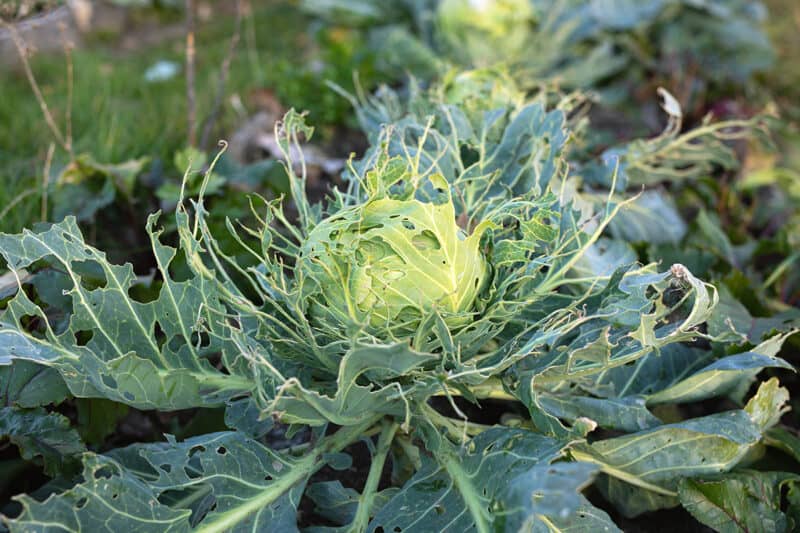
In fact, the larvae do most of their eating during the day, but hidden from view. By clinging to the undersides, they’re sheltered from the sun as well as potential predators. Now that you know their secret, you’re better prepared for your bug battle!
Keep your trap crops well-watered, your row covers securely in place, and your garlicky spray bottle at the ready. You’ll fend off any cabbage white butterflies that are looking for ideal places to lay their eggs, and get rid of any larvae that have hatched.
Just make sure to wash your vegetables well before eating them if you’ve used one of those hot pepper mixes in the spray. Pre-seasoning your food is great, but burning your face off is another thing entirely.
